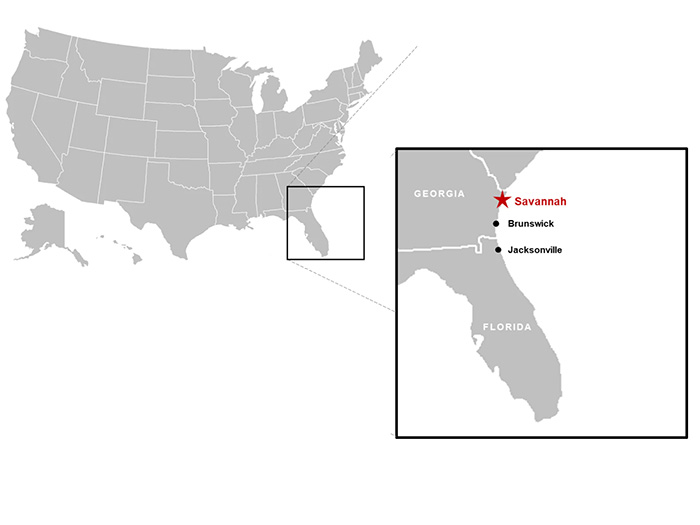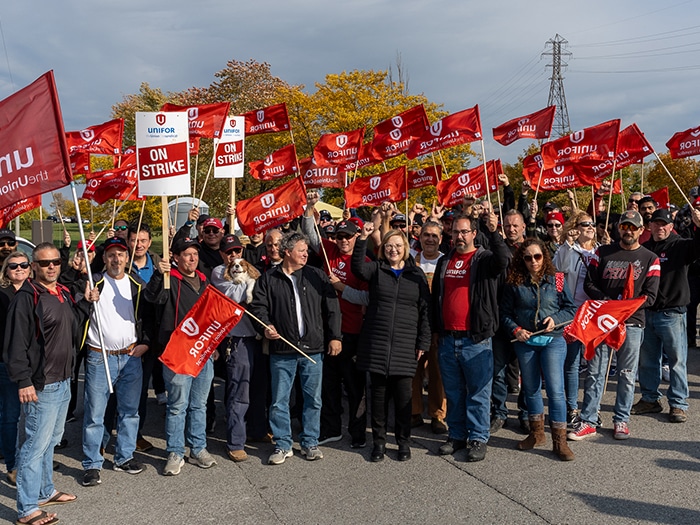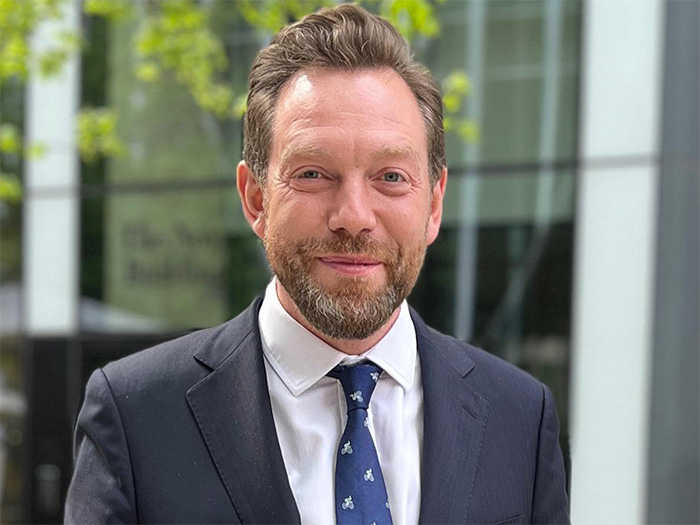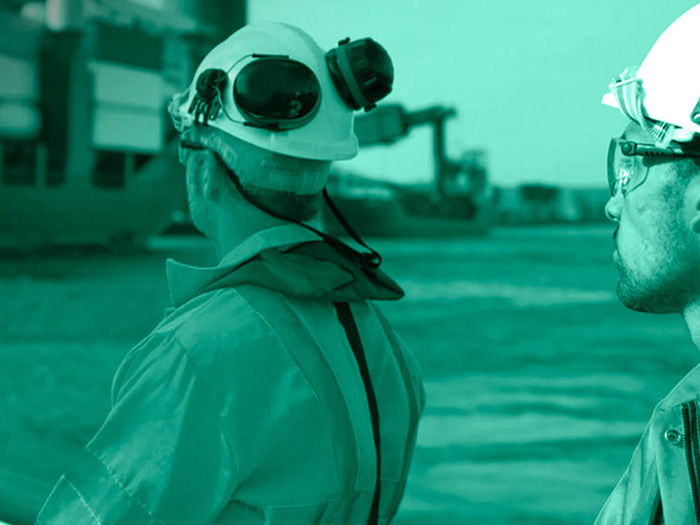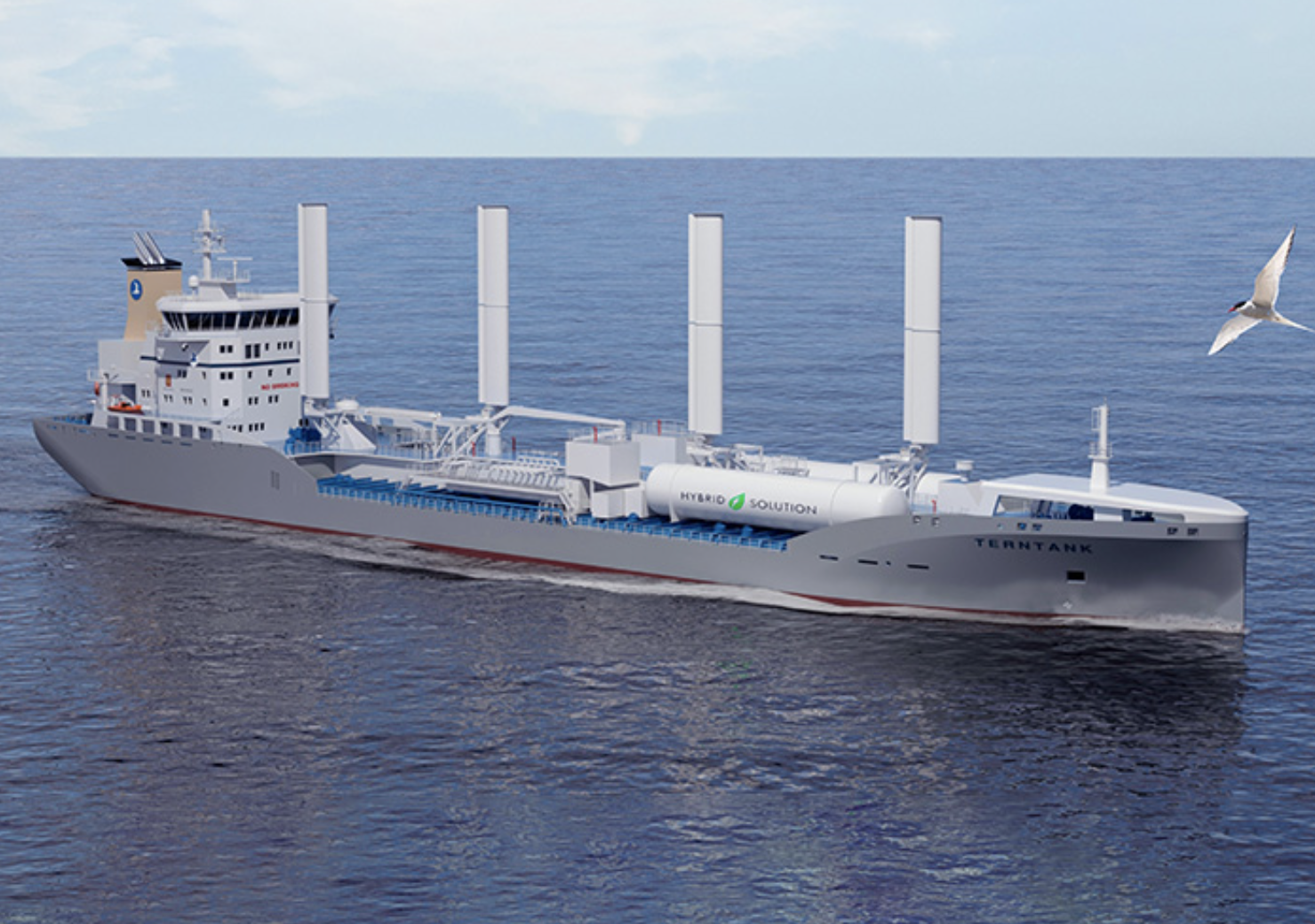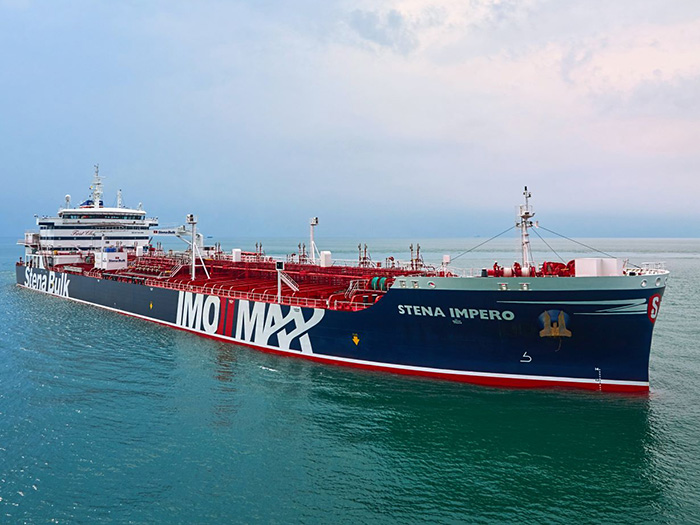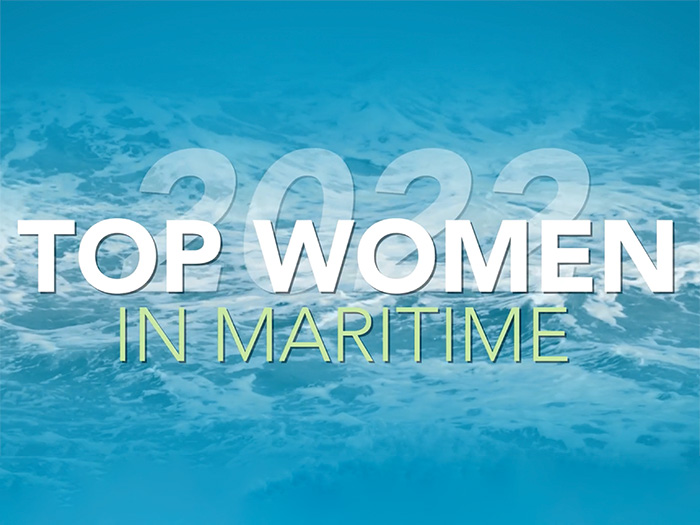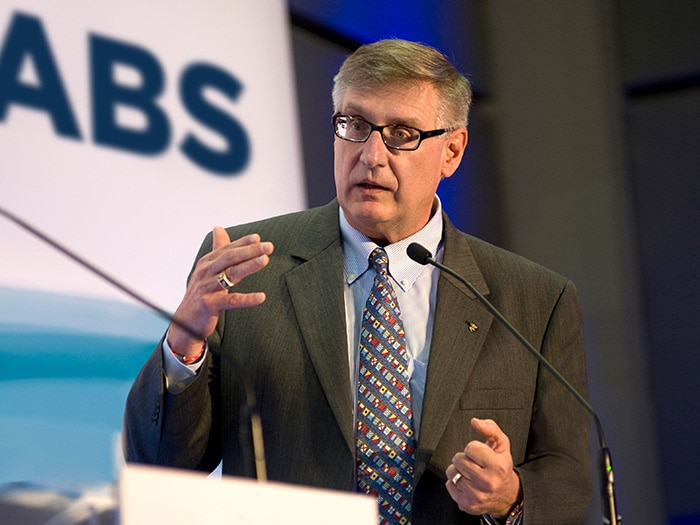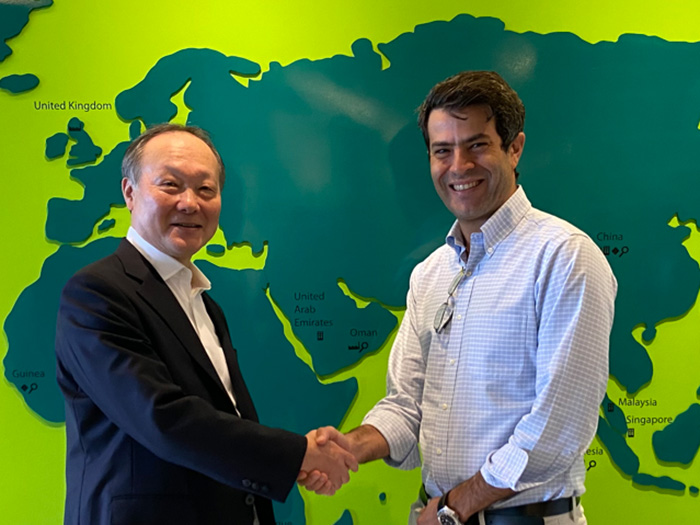A group of eight U.S. and international marine industry leaders is looking to establish a supply chain to deliver ship-to-ship green ammonia bunkering on the U.S. East Group.
The initiative has started with the eight — ABS, A.P. Moller – Maersk A/S, Fleet Management Limited, Georgia Ports Authority, the Maersk Mc-Kinney Moller Center for Zero Carbon Shipping, Savage Services, Sumitomo Corporation and TOTE Services — signing a Memorandum of Understanding (MOU) to jointly conduct a feasibility study that will be conducted at the Port of Savannah, Ga.
Four of the eight are involved in a similar initiative that launched last year in the Port of Singapore.
On the U.S. Atlantic coast, the Port of Savannah, home to Garden City Terminal, the largest single container terminal in the U.S., has the ability to serve multiple ammonia-fueled ultra large containerships (ULCSs) Its Big Berth/Big Ship program is aimed at accommodating six 14,000 TEU vessels simultaneously by 2024, and is planning to add 60% more capacity by 2025. Savannah’s proximity to the Ports of Brunswick and Jacksonville – among America’s busiest vehicle handling ports – could help facilitate decarbonization efforts in the automotive shipping industry as well.
“The Georgia Ports Authority looks forward to learning the results of this joint feasibility study for the potential commercial readiness of ammonia as a possible alternative zero-carbon fuel source, said Joanne Caldwell, director, risk management & sustainability, at Georgia Ports Authority. “Innovative ideas in energy are key to powering Georgia’s future as a leader in responsible economic development and environmental stewardship.”
The study aims to cover the entire end-to-end supply chain of green ammonia bunkering, which includes the development of a cost-effective green ammonia supply chain, the design of an ammonia bunkering articulated tug-barge (AB-ATB), as well as related supply chain infrastructure. In addition, safety assessments are critical to formulate standards for use of ammonia as a marine fuel. Relevant government agencies and experts in the U.S. will be engaged in working towards the standardization of safe operations and regulations.
Ammonia, which does not emit any CO2 when combusted, is high on the list of alternative marine fuels seen as key to achieving shipping’s ambitions for reaching net zero emissions by 2050. Ammonia produced solely from renewable sources, or green ammonia, is carbon-free and can deliver well-to-wake carbon reductions.
Here’s what each of the parties will contribute to the study:
| American Bureau of Shipping | ABS will conduct operational risk assessment of ammonia ship-to-ship bunkering and lead in the coordination with relevant authorities in the U.S.to establish port regulations and operational guidelines. |
| A.P. Moller – Maersk A/S | Maersk will provide input specific to container vessels and will work on development of safe and reliable ammonia bunkering procedures from operator’s point of view. |
| Fleet Management Limited | Fleet Management Limited will work on the development of safe and reliable ammonia bunkering procedures from a ship manager point of view, and provide technical support in the design development of ammonia-fueled vessels and the ammonia-bunkering ATB. |
| Georgia Ports Authority | GPA will support in the coordination with relevant authorities in the U.S. to establish port regulations and operational guidelines, leveraging on its experiences in supporting the launch of LNG bunkering at the Port of Savannah. |
| Maersk Mc-Kinney Moller Center for Zero Carbon Shipping | The center will conduct well-to-wake life cycle analysis (LCA) of ammonia and support to establish standards for the safe use of ammonia as marine fuel. |
| Savage | Savage will focus on domestic ammonia transportation for Savannah, leveraging on the company’s competencies and experience in relation to its operational track record as a domestic ammonia carrier in the U.S. |
| Sumitomo Corporation | Sumitomo will structure, integrate and promote the end-to-end supply chain of green/blue ammonia, which includes sourcing, transportation, storage and bunkering. |
| TOTE Services | TOTE will develop the ammonia-bunkering ATB and safe and reliable ammonia bunkering procedures from the ATB operator’s point of view, leveraging on competencies and experiences in relation to safe and reliable operation track record of LNG bunkering in the U.S. |
NEW FUEL PATHWAYS
“At Maersk, we are committed to net zero by 2040,” said Morten Bo Christiansen, head of energy transition at A.P. Moller-Maersk. “To achieve this we need huge amounts of green fuel for our ships. For now, green methanol is the only pathway that is certain to have material impact in this decade, and we are happy to see the momentum that is building in the shipping industry on this pathway. However, given the enormity of the challenge ahead of us, we must keep exploring additional new fuel pathways. We see green ammonia as a fuel with potential in the long term for commercial shipping. However, safety and environmental challenges related to ammonia’s toxicity must be addressed in the short term, and we must get a solid understanding of the cost of bunkering ammonia. This study will help our industry better understand the full spectrum of practical and safety considerations when dealing with green ammonia as a fuel.”
“TOTE Services is committed to the advancement of alternative fuel solutions that will help lead the maritime industry toward net zero emissions,” said Jeff Dixon, president at TOTE Services. “We look forward to leveraging our core competencies, technical expertise, and demonstrated record of safety and reliability in the LNG market to work with this great group of industry leaders in the ship-to-ship bunkering of ammonia.”
Panos Koutsourakis, vice president, global sustainability at ABS, said “Ammonia offers shipowners and operators a zero-carbon, tank-to-wake emissions profile. Yet, we also recognize that ammonia presents a specific set of safety and technology challenges. We look forward to engaging with the other project members and sharing our industry-leading experience with ammonia-fueled vessels to support the study.”
“We’re delighted to be contributing our technical expertise to this green ammonia study,” said Kishore Rajvanshy, managing director at Hong Kong headquartered Fleet Management Limited. “As the world’s second largest ship manager, we’re committed to supporting our clients on their green energy transition journey, and in recent years have built our capabilities in designing dual fuel vessels and conducting safe and reliable ammonia bunkering. This aims to benefit not just our clients, but the decarbonization pathway for the broader shipping industry.”
“Enabling sustainable and scalable alternative fuel pathways is critically important for building confidence and investment appetite in fuel supply chains,” said Claus Winter Graugaard, CTO at the Maersk Mc-Kinney Moller Center for Zero Carbon Shipping. “At the Maersk Mc-Kinney Moller Center for Zero Carbon Shipping, we are leading multiparty scientific projects and risk management activities on how ammonia can be qualified as a sustainable and safe energy carrier for worldwide marine fuel deployment. The Port of Savannah project is a great logistical entry point for qualifying how ammonia could be made available. Furthermore, it provides a local and regional use case for commercial activation on the U.S East Coast.”
Koji Endo, general manager of the energy division at Sumitomo Corporation, said, “We embark on our ambition to build the first ship-to-ship ammonia bunkering base in the U.S in addition to Singapore and Oman, which highlight our commitment to offer our customers the best available and technologically proven solution to reduce the emission footprint from maritime transport”.
Jason Ray, president, infrastructure sector at Savage, said, “Savage is pleased to collaborate with Sumitomo Corporation and other partners on this exciting project, doing our part to help advance the development of alternative marine fuels and contribute to global decarbonization efforts.”


